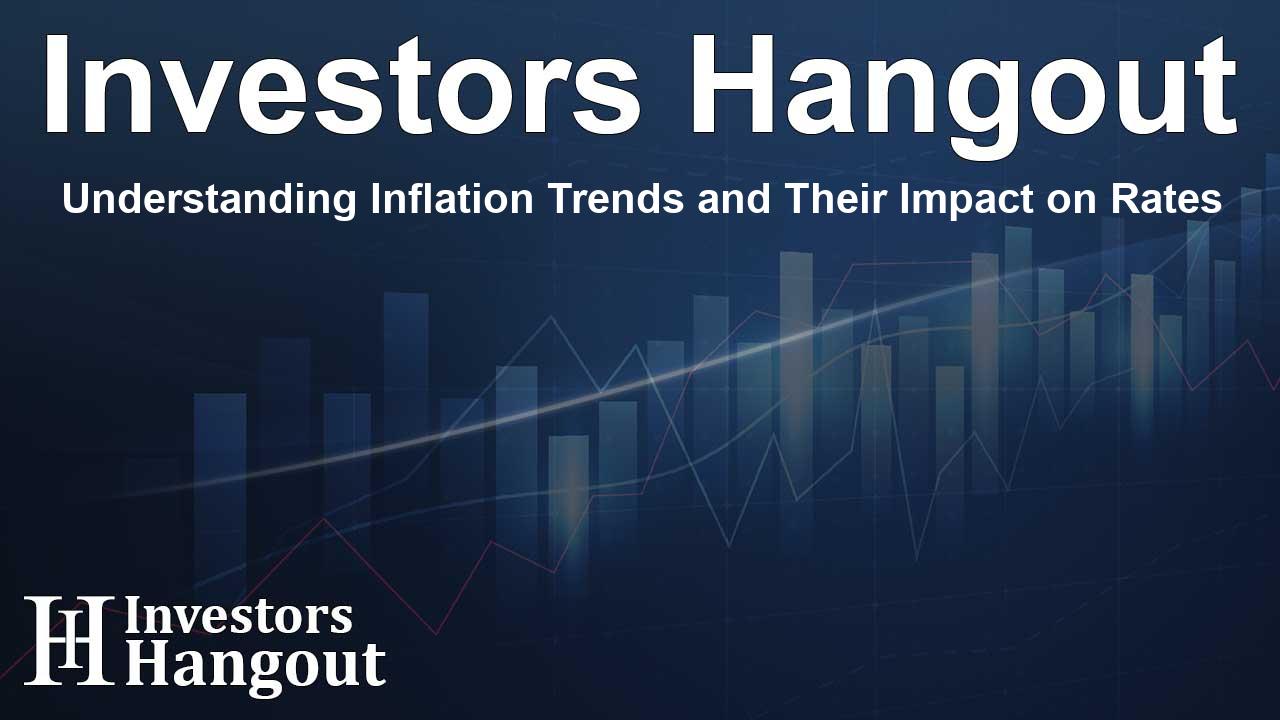Understanding Inflation Trends and Their Impact on Rates

Inflation Trends and Their Market Effects
Rates have been on the rise recently, indicating that the market is bracing itself for higher inflation. The 10-year rate increased by 2.5 basis points, reaching 4.79%, while the 30-year rate rose by two basis points to 4.97%. Furthermore, the spread between the 30-year and 3-month bonds has expanded to 64 basis points, reflecting changing investor sentiments.
Upcoming Economic Reports to Watch
Economic reports are pivotal in shaping market expectations. Analysts are awaiting the Producer Price Index (PPI) report, which is set to release soon, with forecasts suggesting a consistent rise in inflation metrics. The headline figure is anticipated to show an increase of 0.4%, mirroring last month’s performance, while core readings are expected to climb from 0.2% to 0.3%. These numbers project an annual headline growth of 3.5% and a core increase to 3.8%.
Rising CPI Expectations
As we look ahead, expectations for the Consumer Price Index (CPI) have also shifted, with the month-over-month forecast now at 0.4%. This adjustment aligns with trends noted within the swaps market, which indicate significant market anticipation regarding inflation trends.
Market Influences from Energy Prices
Currently, the inflationary concerns are further fueled by rising energy prices. Recently, oil prices surged by approximately 3%, reaching around $79 per barrel. Additionally, RBOB gasoline prices are climbing towards notable breakout levels, complicating the market's inflation outlook.
Impact of Energy and Inflation on Interest Rates
These rising energy costs contribute to heightened inflation fears and have been reflected in the two-year inflation swaps, which rose over four basis points to 2.70%. Such trends suggest that market participants are increasingly wary of inflationary pressures influencing future economic conditions.
Long-term Inflation Expectations
Furthermore, five-year swaps increased to 2.61%, suggesting a shift towards the upper range of their one-year trajectories. This uptick in swaps illustrates how inflation expectations are shaping perceived long-term costs of borrowing.
Understanding Breakevens and Term Premiums
While some voices in the media argue that rising rates are not a concern, the data tells a different story. For instance, ten-year breakeven rates also saw an increase, rising by two basis points to 2.47%. This marks a striking contrast to levels seen in September, demonstrating the market's evolving perspective on inflation.
The term premium on the 10-year bonds has climbed to 65 basis points, one of the highest figures recorded since 2015. This combination of rising term premiums along with inflation expectations underscores the market's necessity for greater yield as a hedge against inflation.
Looking Ahead: Short-term and Long-term Patterns
As we approach the critical PPI and CPI reports, short-term inflation expectations remain elevated. The swaps for upcoming months indicate a rise, with December and January showing projected rates at 2.92%, with subsequent months also reflecting a note of caution.
Market Reactions to Oil Prices
Since mid-2022, the Federal Reserve has enjoyed the benefit of relatively stable oil prices. However, consistently fluctuating oil prices, especially bouncing off the $65-$70 range, suggest a forthcoming change in the market landscape. The recent breaks in downtrends for oil prices indicate a potential upward trajectory, although caution is advised due to minor pullback risks dictated by technical factors.
In summary, the interplay between inflation and interest rates continues to shape the economic landscape. Market dynamics suggest that understanding these trends is crucial for both investors and analysts alike.
Frequently Asked Questions
What are the main drivers of rising interest rates currently?
Rising interest rates are primarily driven by increasing inflation expectations and higher term premiums in the bond market.
How do energy prices influence inflation?
Rising energy prices contribute to overall inflation by increasing the cost of production and transportation, affecting consumer prices.
What do breakeven rates indicate?
Breakeven rates reflect market expectations regarding future inflation, indicating how much inflation investors expect during the life of a bond.
What is the significance of the PPI and CPI reports?
The PPI and CPI reports are critical indicators of inflation trends that assess the change in prices producers and consumers face, respectively.
What does a rising term premium indicate?
A rising term premium indicates that investors require higher compensation for the risk associated with holding longer-term bonds, often due to inflation fears.
About The Author
Contact Caleb Price privately here. Or send an email with ATTN: Caleb Price as the subject to contact@investorshangout.com.
About Investors Hangout
Investors Hangout is a leading online stock forum for financial discussion and learning, offering a wide range of free tools and resources. It draws in traders of all levels, who exchange market knowledge, investigate trading tactics, and keep an eye on industry developments in real time. Featuring financial articles, stock message boards, quotes, charts, company profiles, and live news updates. Through cooperative learning and a wealth of informational resources, it helps users from novices creating their first portfolios to experts honing their techniques. Join Investors Hangout today: https://investorshangout.com/
The content of this article is based on factual, publicly available information and does not represent legal, financial, or investment advice. Investors Hangout does not offer financial advice, and the author is not a licensed financial advisor. Consult a qualified advisor before making any financial or investment decisions based on this article. This article should not be considered advice to purchase, sell, or hold any securities or other investments. If any of the material provided here is inaccurate, please contact us for corrections.
